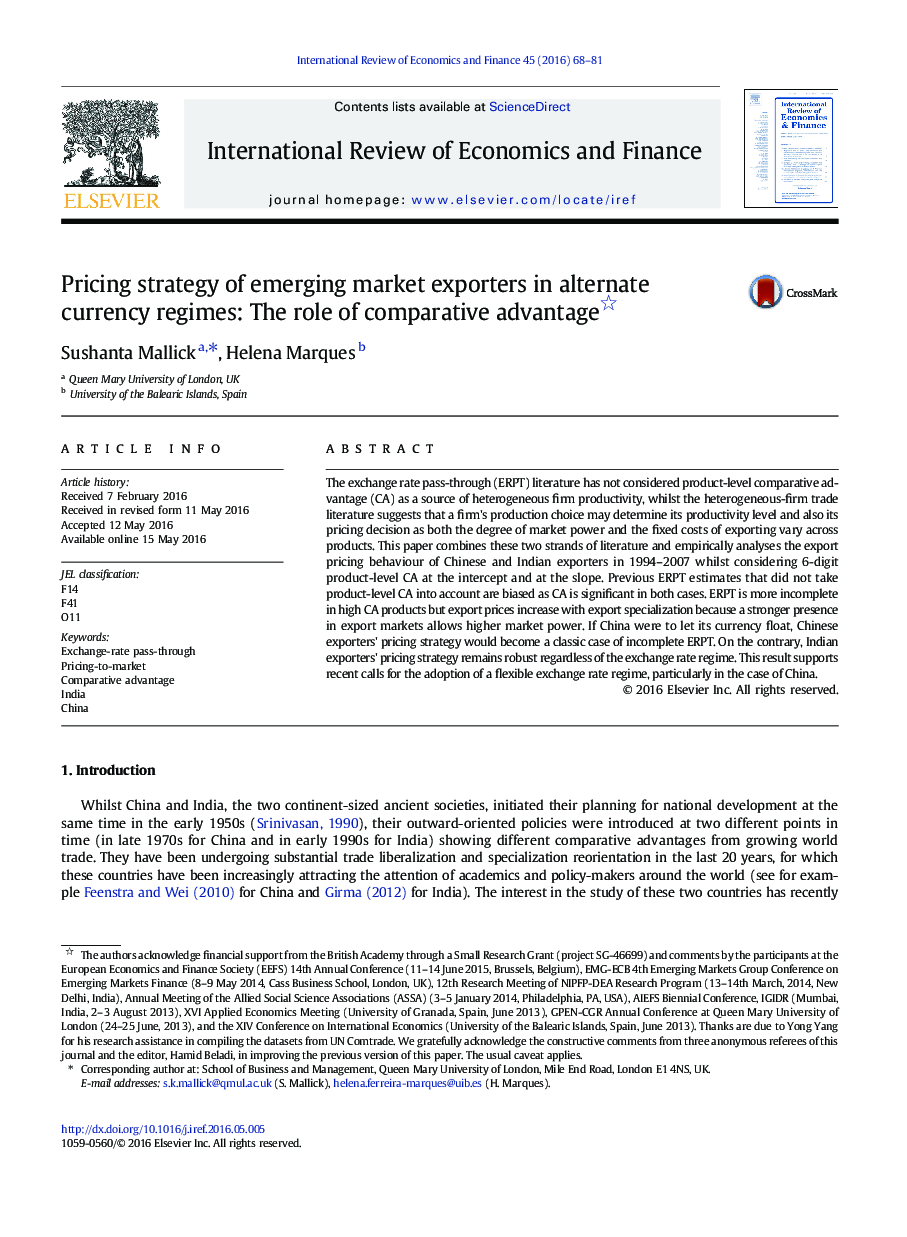| Article ID | Journal | Published Year | Pages | File Type |
|---|---|---|---|---|
| 5083266 | International Review of Economics & Finance | 2016 | 14 Pages |
Abstract
The exchange rate pass-through (ERPT) literature has not considered product-level comparative advantage (CA) as a source of heterogeneous firm productivity, whilst the heterogeneous-firm trade literature suggests that a firm's production choice may determine its productivity level and also its pricing decision as both the degree of market power and the fixed costs of exporting vary across products. This paper combines these two strands of literature and empirically analyses the export pricing behaviour of Chinese and Indian exporters in 1994-2007 whilst considering 6-digit product-level CA at the intercept and at the slope. Previous ERPT estimates that did not take product-level CA into account are biased as CA is significant in both cases. ERPT is more incomplete in high CA products but export prices increase with export specialization because a stronger presence in export markets allows higher market power. If China were to let its currency float, Chinese exporters' pricing strategy would become a classic case of incomplete ERPT. On the contrary, Indian exporters' pricing strategy remains robust regardless of the exchange rate regime. This result supports recent calls for the adoption of a flexible exchange rate regime, particularly in the case of China.
Related Topics
Social Sciences and Humanities
Economics, Econometrics and Finance
Economics and Econometrics
Authors
Sushanta Mallick, Helena Marques,
